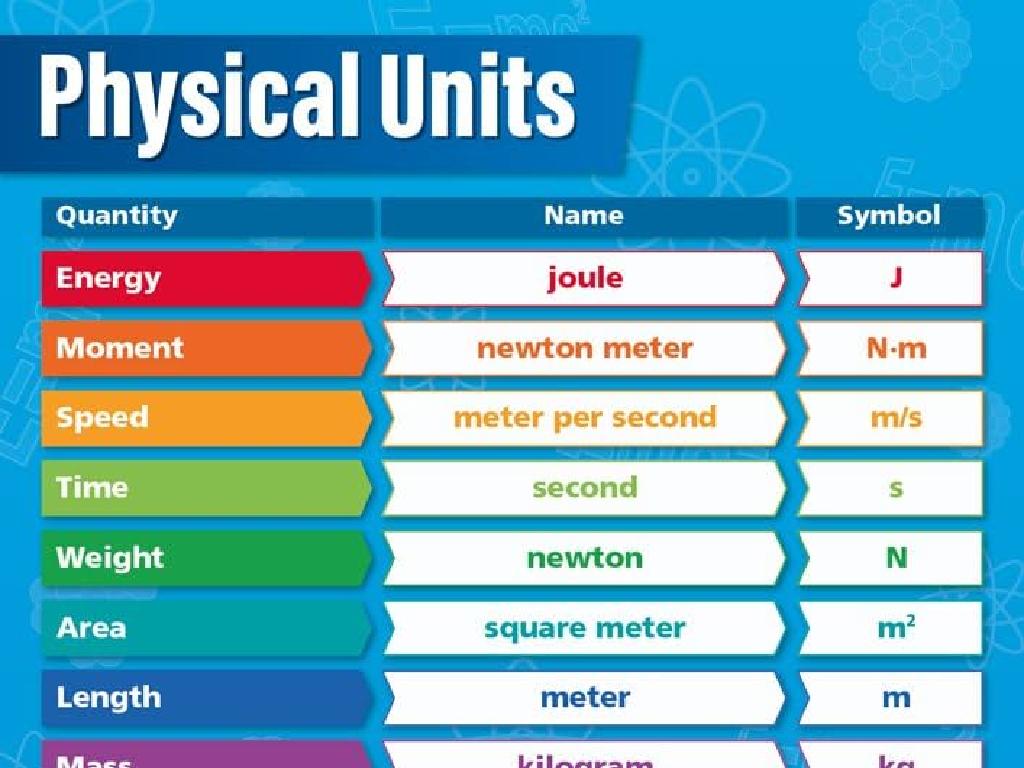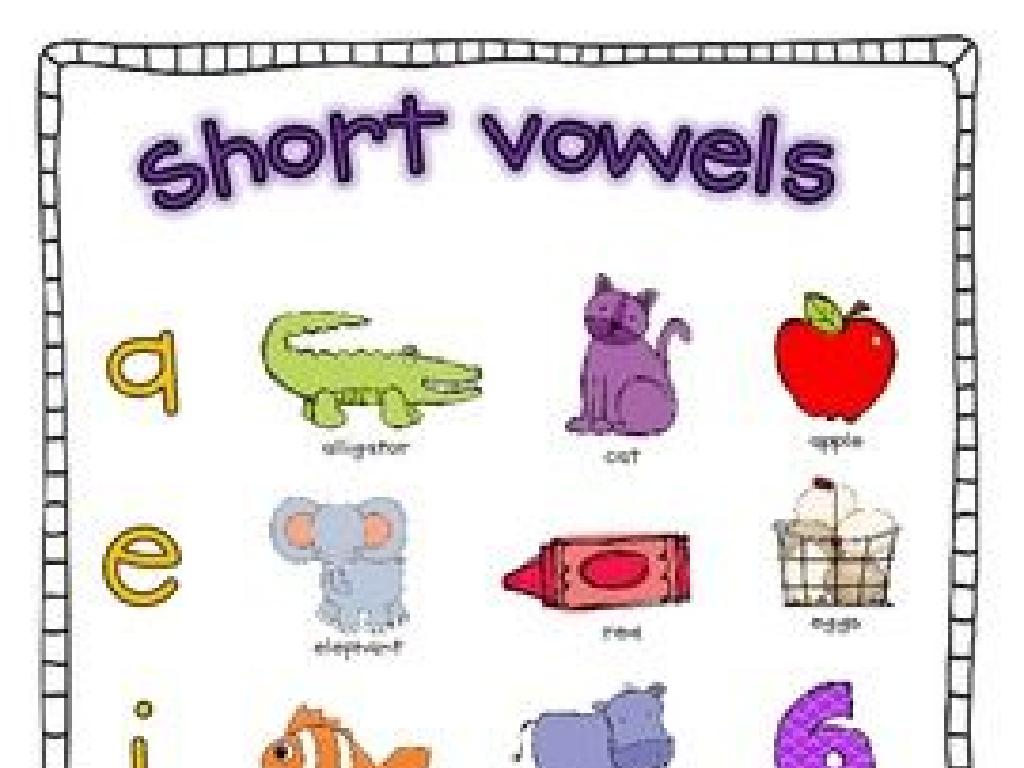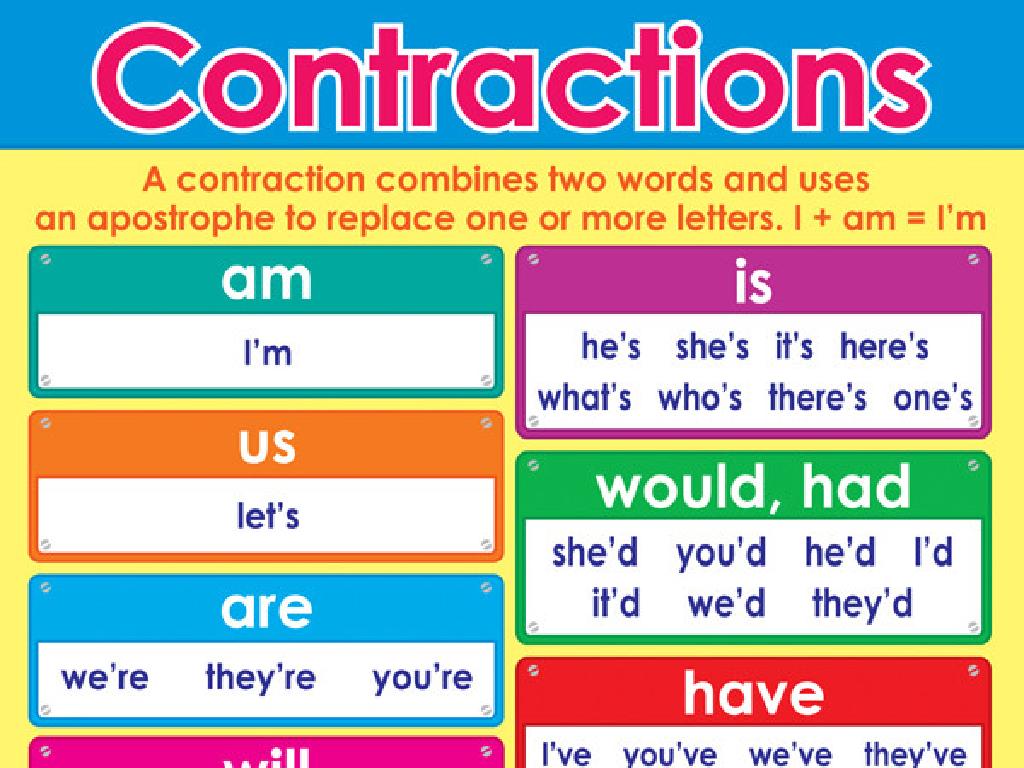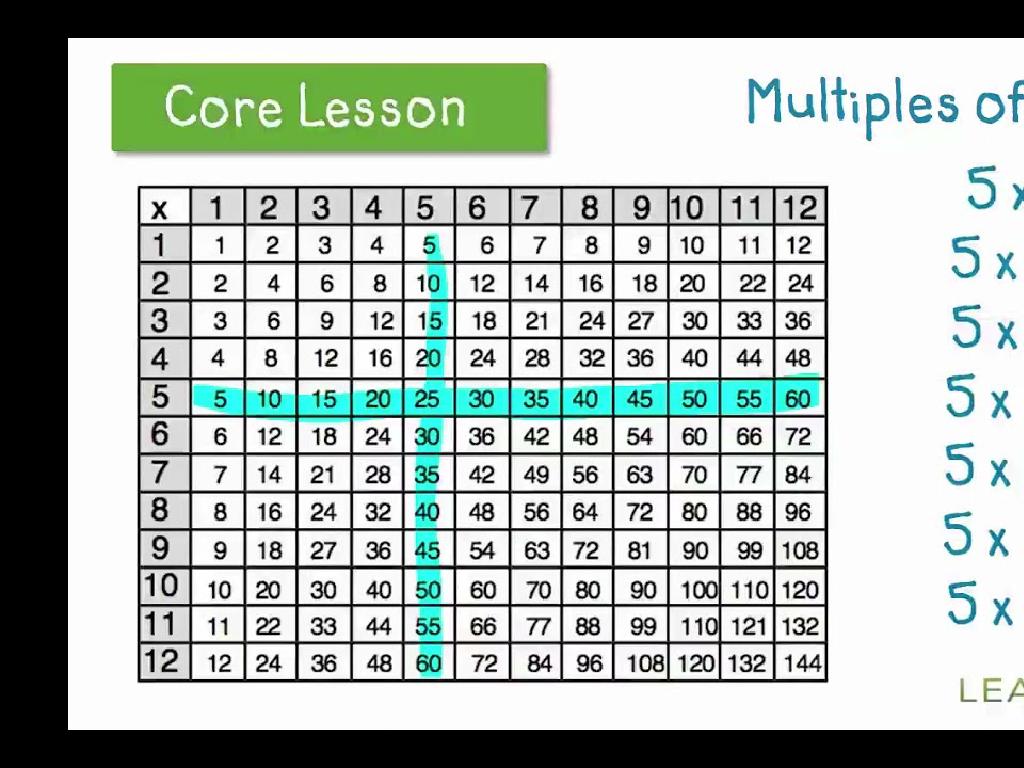Lines, Line Segments, And Rays
Subject: Math
Grade: Third grade
Topic: Lines And Angles
Please LOG IN to download the presentation. Access is available to registered users only.
View More Content
Exploring Lines, Segments, and Rays
– What are lines in geometry?
– A line is straight and has no endpoints, it goes on forever!
– Line segments: lines with ends
– Segments are parts of lines, like a pencil or a stick.
– Rays: lines that start but don’t end
– A ray starts at one point and goes on forever in one direction.
– Geometry in our world
– Look around! Tables, pencils, and roads all have lines and segments.
|
This slide introduces third graders to the fundamental concepts of lines, line segments, and rays in geometry. Begin by explaining that a line is straight and extends infinitely in both directions. Contrast this with a line segment, which is like a piece of a line with two endpoints. Then, describe a ray as a part of a line that has a starting point but continues infinitely in one direction. Use everyday objects to illustrate these concepts, such as a road for a line, a pencil for a line segment, and a sunbeam for a ray. Encourage students to observe these elements in the classroom and at home to connect the lesson to the real world.
Exploring Lines in Geometry
– A line is perfectly straight
– Lines have no end points
– Unlike line segments, lines don’t stop
– They extend infinitely
– Think of them as continuing in space
– Imagine lines go on forever
– Use your imagination to picture this
|
This slide introduces the concept of a line in geometry. Emphasize to the students that a line is always straight, no matter how long it is. Unlike a line segment, a line has no fixed endpoints; it goes on indefinitely in both directions. To help students visualize this, encourage them to imagine a line that stretches out to the edges of the universe and beyond. Use a real-world analogy, such as a road that doesn’t end, to make this abstract concept more concrete. Ask the students to draw a line in the air with their finger and see if they can think of something that goes on forever.
Exploring Line Segments
– Line segment is a line part
– Imagine a line with two end dots; that’s a line segment!
– It has two fixed endpoints
– Points where the line segment ends
– Connects any two points
– Pick any spots; a line segment links them directly
– Measure length with a ruler
– Use a ruler to find how long the segment is
|
This slide introduces the concept of line segments to third-grade students. A line segment is a part of a line, which means it doesn’t go on forever; it has a start and an end, which we call endpoints. It’s like a piece of a straight road between two cities. To help students visualize, you can demonstrate with a stick or a string with marked ends. Encourage students to think of examples of line segments they see around them, like the edge of a book or a table. Show them how to measure the length of a line segment using a ruler, which is a practical skill they can use in class and at home.
Exploring Rays
– A ray has one fixed endpoint
– It extends infinitely in one direction
– Imagine a star’s light as a ray
– Like a flashlight beam starting at the flashlight
– Think of a real-life ray example
– Example: Sun’s ray reaching Earth
|
Introduce the concept of a ray to the students by comparing it to something familiar, such as the light from a star or a flashlight, which starts at one point and goes on forever. Explain that unlike a line, a ray has a starting point, called an endpoint, but no end point on the other side. Encourage the students to come up with their own examples of rays they might have seen or can imagine. This will help them understand the concept of rays and how they are a part of everyday life. Use illustrations to show rays in a way that third graders can easily understand.
Exploring Lines, Segments, and Rays
– What are lines, segments, and rays?
– Lines go on forever, segments have ends, rays have one end
– Identifying examples together
– We’ll look at pictures and decide what each example is
– Differentiating each one
– Learn the clues that tell them apart
– Why it matters in geometry
|
This slide is aimed at helping third-grade students understand the basic concepts of lines, line segments, and rays. Start by explaining that a line is straight and has no endpoints, extending infinitely in both directions. A line segment is part of a line, with two endpoints. A ray has one endpoint and extends infinitely in one direction. Use visual aids to help students identify each on the slide. Discuss why recognizing these differences is crucial in geometry, as it helps in understanding shapes and angles. Encourage students to ask questions and provide plenty of examples for them to practice differentiating between lines, line segments, and rays.
Using Lines, Segments, and Rays in Shapes
– Drawing shapes with lines
– Use straight lines to form shapes like squares and triangles
– Shapes are line segments!
– Every side of a shape is a line segment, like a pencil or stick
– Rays show angles and directions
– A ray is like a sunbeam, it starts at one point and goes on forever
– Practice with fun activities
|
This slide introduces students to the concept of using lines, line segments, and rays to create and understand shapes, which is a fundamental part of geometry. Emphasize that all shapes are made up of line segments, which are like the edges of a puzzle. Explain that rays are part of our daily life, helping us understand concepts like sunlight or the beam of a flashlight. Incorporate hands-on activities where students can draw their own shapes using rulers for straight lines, identify line segments in those shapes, and use rays to draw and measure angles. Encourage students to look for these elements in objects around the classroom to relate the lesson to real life.
Class Activity: Creating Shapes with Lines
– Use sticks for line segments
– Arrange sticks into shapes
– Create rays with string and pin
– Pin the string to a board, stretch it out to make a ray
– Explore shapes with lines and rays
|
This hands-on activity is designed to help students understand the concepts of line segments and rays by creating them with physical objects. Provide students with sticks to represent line segments and challenge them to arrange these sticks into various shapes. For rays, give them a pin and string; they can pin one end of the string to a board to represent the endpoint and stretch the string out to show the ray extending infinitely in one direction. Encourage creativity and exploration of different shapes and configurations. Possible activities include creating a square, triangle, or even a house outline with line segments, and using rays to represent sunlight or starbeams. This will help solidify their understanding of these geometric concepts in a fun and interactive way.
Review: Lines, Segments, and Rays
– Recap lines, segments, and rays
A line has no end, a segment has two ends, a ray has one end.
– Importance in geometry
They are the building blocks for shapes and structures.
– Classroom examples of each
A ruler’s edge is a line segment, sunlight through a window forms rays.
– Engage with the concepts
|
As we conclude, let’s revisit the key concepts of lines, line segments, and rays. Understanding these basic geometric figures is crucial because they form the foundation for more complex shapes and are used in various real-world applications. Encourage the students to look around the classroom for practical examples of each concept. For instance, the edge of a desk can represent a line segment, while the beam of light from a projector can be thought of as a ray. Engaging with these ideas in a familiar environment helps solidify their understanding and demonstrates the relevance of geometry in everyday life. Prepare to have a discussion with the class about where they see these elements in the room and why recognizing them is important.
Geometry Homework: Exploring Lines at Home
– Take your worksheet home
– Find lines, segments, and rays around you
– Look for door edges (segments) or sunrays (rays)
– Draw these in your geometry journal
– Use a ruler to draw straight lines in your journal
– Share your findings in class
|
This homework assignment is designed to help students recognize geometric concepts in their everyday environment. By identifying lines, line segments, and rays in familiar settings, students can better understand these abstract concepts. Encourage them to use their worksheet as a guide and to draw their findings accurately in their geometry journals. Remind them to look for examples like the edge of a door (line segment) or the sun’s rays (rays). In the next class, ask students to share their drawings and discuss how these geometric figures appear in real life. This activity will reinforce their understanding and help them visualize geometry in the world around them.






